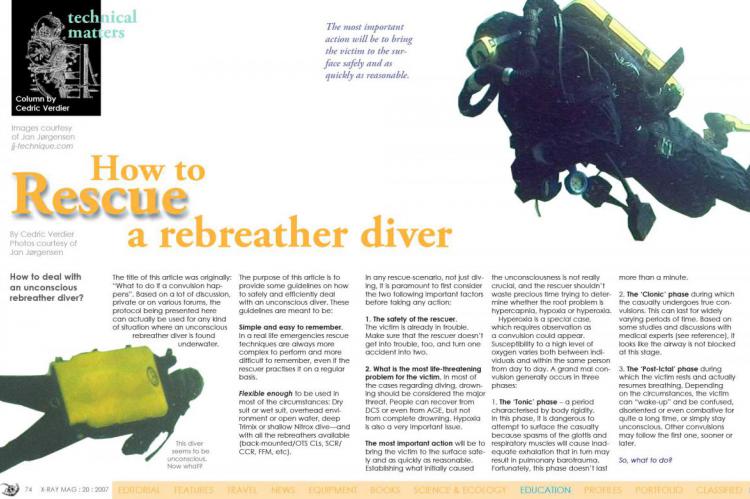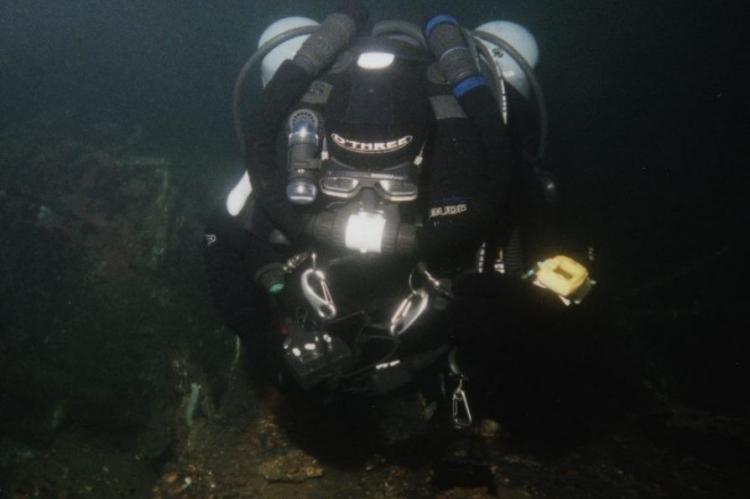Rescuing a Rebreather Diver
How to deal with an unconscious rebreather diver?
The title of this article was originally:
“What to do if a convulsion happens”.
Tags & Taxonomy
The purpose of this article is to provide some guidelines on how to safely and efficiently deal
with an unconscious diver.
These guidelines are meant to be: Simple and easy to remember.
In a real life emergencies rescue techniques are always more complex to perform and more difficult to remember, even if the rescuer practises it on a regular basis.
Flexible enough to be used in most of the circumstances: Dry suit or wet suit, overhead environment or open water, deep Trimix or shallow Nitrox dive—and with all the rebreathers available (back-mounted/OTS CLs, SCR/ CCR, FFM, etc).
In any rescue-scenario, not just diving, it is paramount to first consider the two following important factors before taking any action:
1. The safety of the rescuer. The victim is already in trouble. Make sure that the rescuer doesn’t get into trouble, too, and turn one accident into two.
2. What is the most life-threatening problem for the victim. In most of the cases regarding diving, drowning should be considered the major threat. People can recover from DCS or even from AGE, but not from complete drowning. Hypoxia is also a very important issue.
The most important action will be to bring the victim to the surface safely and as quickly as reasonable. Establishing what initially caused the unconsciousness is not really crucial, and the rescuer shouldn’t waste precious time trying to determine whether the root problem is hypercapnia, hypoxia or hyperoxia. Hyperoxia is a special case, which requires observation as a convulsion could appear.
Susceptibility to a high level of oxygen varies both between individuals and within the same person from day to day. A grand mal convulsion generally occurs in three phases:
1. The ‘Tonic’ phase – a period characterised by body rigidity. In this phase, it is dangerous to attempt to surface the casualty because spasms of the glottis and respiratory muscles will cause inadequate exhalation that in turn may result in pulmonary barotrauma.
Download the full article ⬇︎

Originally published
X-Ray Mag #20
Raja Ampat revisited. White Sea in the Russian North. Dive lamps - how to choose. Osmosis explained. How to save a rebreather diver. Reports and news from DEMA and Antibes festival. Photographing models. Shopping for the holidays. Lyngstølsvattnet.



